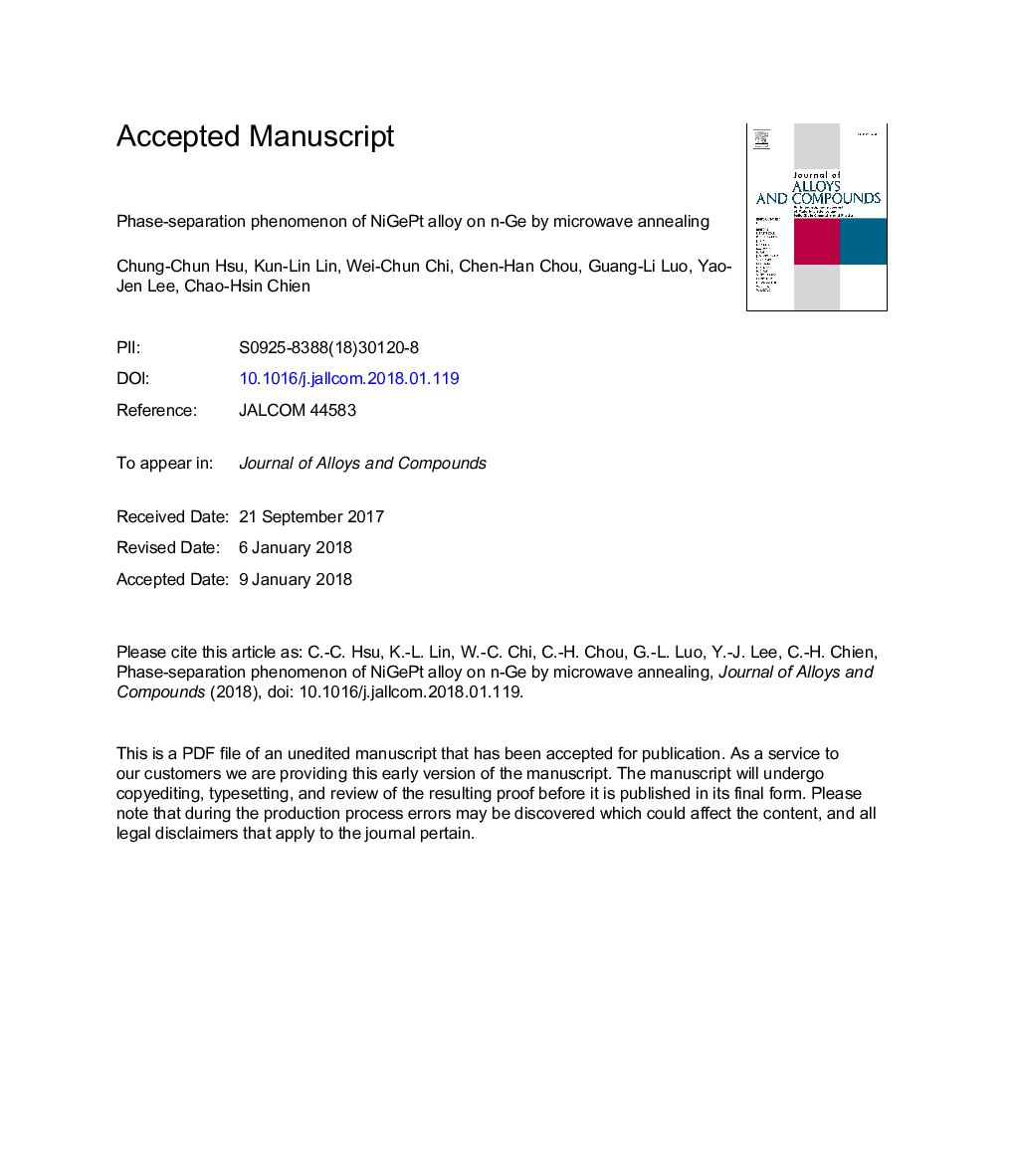| Article ID | Journal | Published Year | Pages | File Type |
|---|---|---|---|---|
| 7993159 | Journal of Alloys and Compounds | 2018 | 19 Pages |
Abstract
During the formation of distinct bilayer NiGePt alloy, a phase-separation phenomenon was observed using microwave annealing and structural engineering. The microstructures of bilayer NiGePt [PtGe(Ni)-NiGe(Pt)] alloys fabricated with 10-nm Ni and various thicknesses of Pt (5, 10, and 15Â nm) were characterized. Within the same thermal budget as microwave annealing, the diffusion of Ni exhibited stronger alloy formation ability with Ge and drilled through the Pt layer without resistance. The higher diffusivity of Ni atoms dominated the diffusion of Ni through the Pt layer to form a stable crystalline layer, NiGe(Pt). Ge diffused outwardly toward the Pt layer to form a PtGe(Ni) layer. This special phenomenon of bilayer alloy formation was elucidated using nanobeam electron diffraction by transmission electron microscopy in conjunction with energy-dispersive spectrometry. Comparing the differences in metal alloys between microwave and rapid thermal annealing, microwave annealing formed a bilayer alloy more apparently than rapid thermal annealing. The results and electrical characteristics indicated that a thicker Pt layer for forming a bilayer NiGePt alloy with alloy separation could also effectively improve the leakage current of NiGePt [PtGe(Ni)- NiGe(Pt)]/n-Ge Schottky junctions.
Keywords
Related Topics
Physical Sciences and Engineering
Materials Science
Metals and Alloys
Authors
Chung-Chun Hsu, Kun-Lin Lin, Wei-Chun Chi, Chen-Han Chou, Guang-Li Luo, Yao-Jen Lee, Chao-Hsin Chien,
